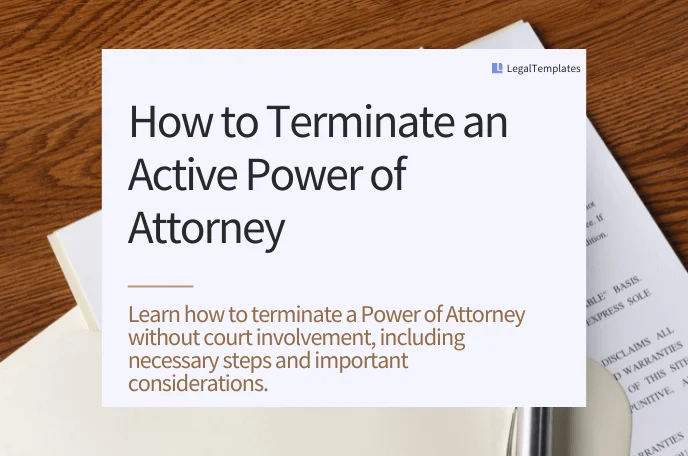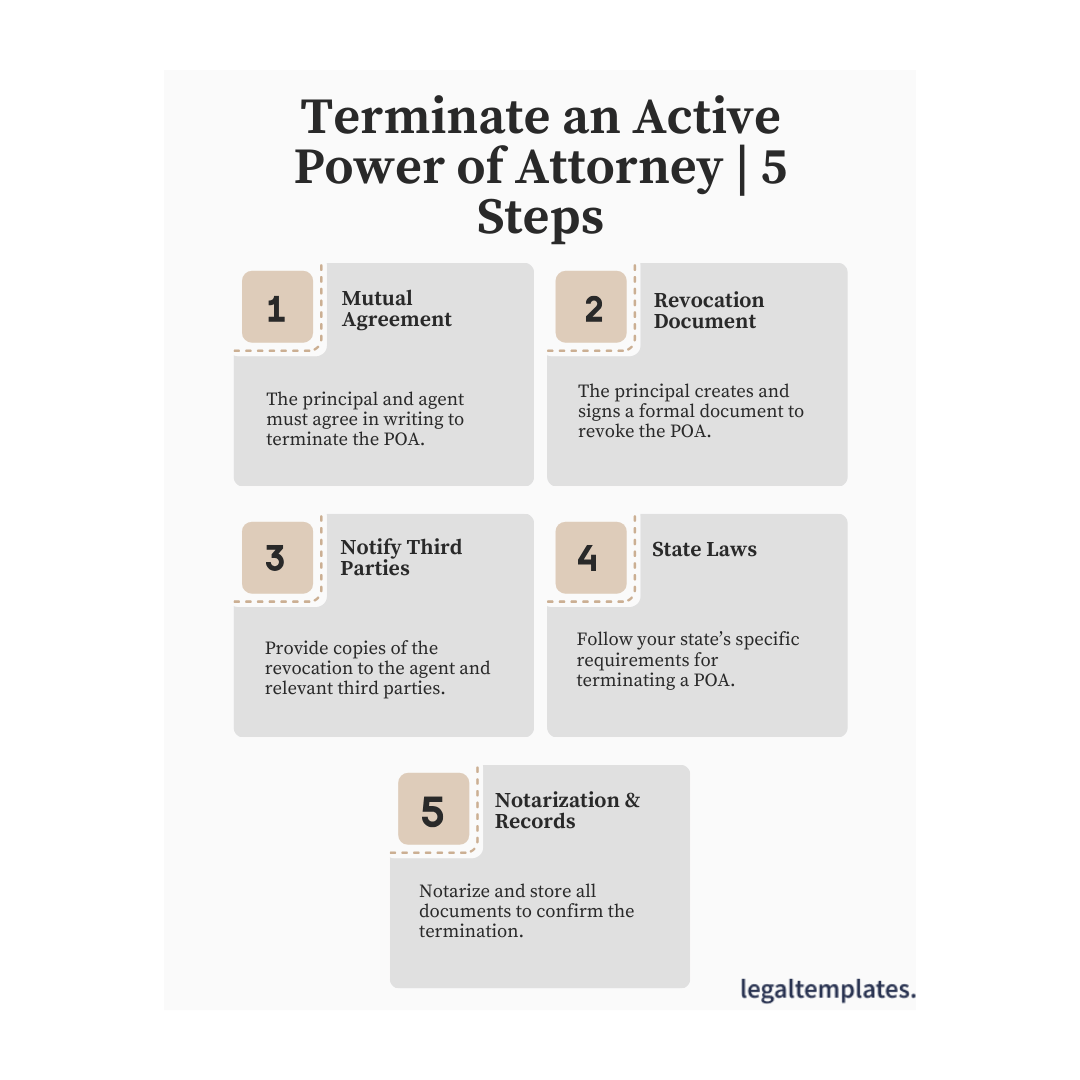
A power of attorney (POA) allows one person (the principal) to grant another person (the agent) the authority to make decisions on their behalf for various purposes, such as managing finances or healthcare. When the principal no longer needs the POA or circumstances change, they may want to terminate it without involving the court.
In this guide, you’ll learn how to terminate an active POA, factors to consider before termination, and alternative ways to resolve possible disputes.
Reasons to Terminate a Power of Attorney
You may need to terminate a Power of Attorney for various reasons, including:
- The principal is now able to make decisions on their own.
- The POA was set to last for a specified period, and that time has ended.
- The agent is no longer capable or willing to act in the role.
- The principal has appointed a new Agent.
- The purpose of the POA has been fulfilled.
- The principal has passed away.
- Limited Power of Attorney: Grants specific authority to the agent, such as managing financial or legal matters, without broad decision-making power.
- Durable Power of Attorney: Remains in effect even if the principal becomes incapacitated.
- Medical Power of Attorney: Allows the agent to make healthcare decisions if the principal cannot.
- Minor Power of Attorney: Temporarily grants someone the authority to care for a minor child, including making decisions about their education, health, and general welfare.
Terminating a Power of Attorney Without Court Involvement
You can terminate an active POA without going to court if it was created voluntarily by the principal and no court order was involved. The principal or agent must follow the appropriate steps to recognize the termination legally.

Here’s a step-by-step guide to terminating an active power of attorney:
Step 1: Mutual Agreement
The principal and agent must agree to terminate the POA. This agreement should be documented in writing to ensure both parties know and accept the termination.
Step 2: Prepare a Revocation Document
The principal must create a formal document to revoke the POA. This revocation should be written, signed, and dated by the principal. It is recommended that this document be notarized for added legal protection.
Step 3: Notify the Agent and Third Parties
Once the revocation document is prepared, the principal should provide a copy to the agent and any third parties involved in the POA (e.g., banks and medical providers). This ensures that the revocation is known and that the agent cannot make further decisions.
Step 4: Follow State-Specific Laws
Each state has its own requirements for terminating a POA. Be sure to check your state’s specific laws to ensure compliance. Some states may require additional steps, such as recording the revocation in public records or notifying government agencies.
Step 5: Notarization and Recordkeeping
After revocation, ensure that all necessary documents are notarized and filed correctly. Keeping records of the termination process helps prevent future disputes and ensures that all parties recognize the termination.
Considerations Before Terminating a Power of Attorney
Before terminating, consider the following:
- Best Interests of the Principal: Ensure the termination aligns with the principal’s ability to manage their affairs and that no crucial decisions are left unresolved.
- Capacity to Revoke: The principal must have the mental capacity to revoke the POA. If incapacitated, the termination must be handled according to the POA terms or through court intervention.
- Clear Documentation: The revocation document must clearly state the intent to terminate the POA and include relevant details, such as the date of revocation and the identities of the principal and agent.
Alternatives to Legal Intervention
While court involvement is generally unnecessary for terminating a power of attorney, disputes may arise between the principal and agent or other parties. In such cases, alternative dispute resolution methods can be used to avoid going to court:
- Mediation: Involves a neutral third party to facilitate discussions between the principal and agent, helping them reach a voluntary resolution without court intervention.
- Arbitration: A neutral third party listens to both sides and makes a legally binding decision to resolve the dispute.
Conclusion
Terminating an active power of attorney is straightforward if the principal and agent agree and follow the proper steps. To prevent future issues, it’s essential to ensure all required documents are correctly executed and all involved parties are notified. When disputes arise, alternative methods like mediation and arbitration can be used to resolve the matter outside of court.
If you are unsure about the termination process, seeking legal advice from a family or estate attorney can help ensure everything is handled correctly.
